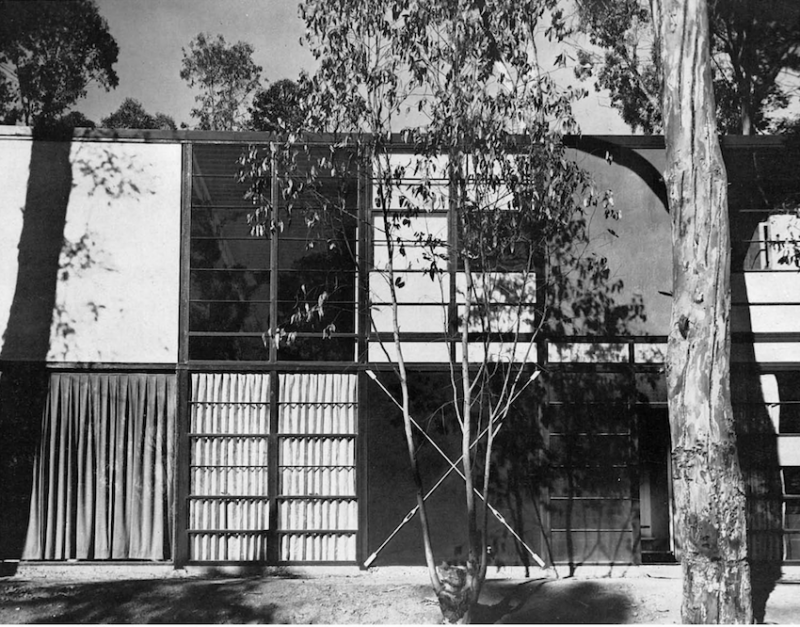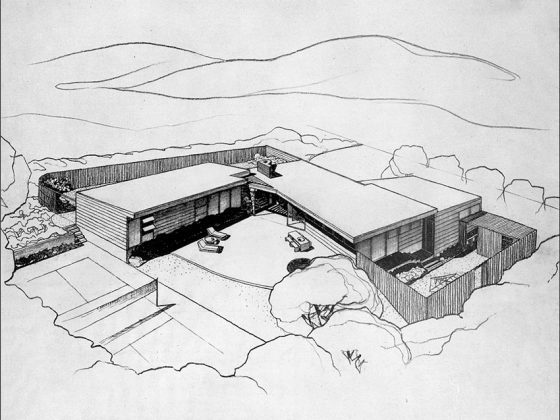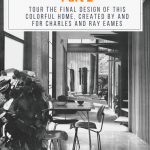The Case Study Houses were and are an illustration of modernism’s intended audience—the masses. These homes were intended to change the way we look at residential design and forever alter the way we live. Built or unfinished, preserved or lost, join us as we take a closer look at each of the iconic designs that carry the name “Case Study House.” In this installment we look at the final plans and finished project for Case Study House #8. Take a look back at Part 1 to learn about the early design and introduction to the project.
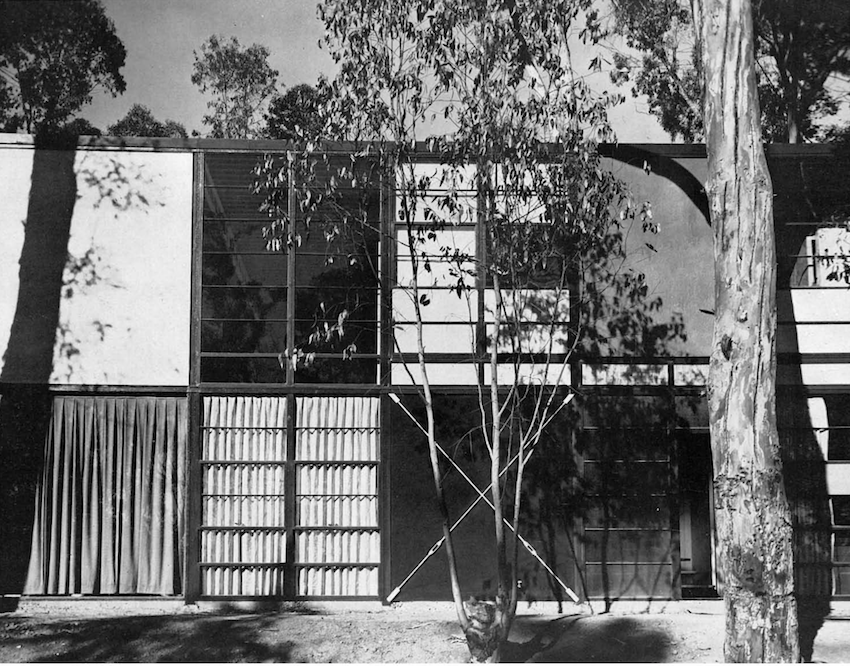
Final Plans
In the updated plans, tweaked by Charles and Ray Eames to integrate their home into the surrounding meadow, the house was set into a hillside and located amongst a row of tall eucalyptus trees. Building the home on a level lot would have made sense economically but would have significantly damaged the existing meadow.
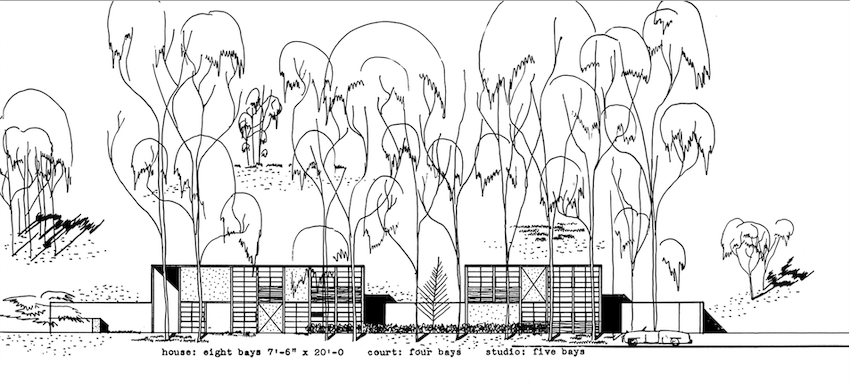
Similar to the original design in concept, there was still a living space and separate studio, this time connected by a court. The two main spaces were rectangular in shape and made from glass and steel. A large concrete retaining wall sits against the hillside. The home construction was meant to be available to the masses and it was mostly made of accessible prefabricated components.
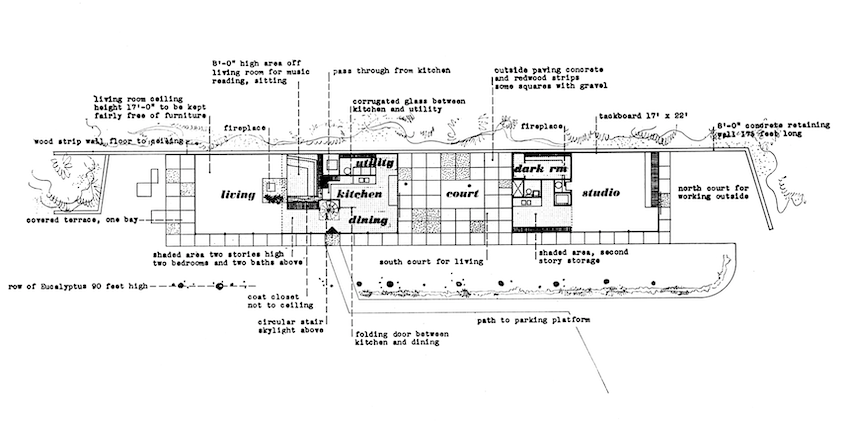
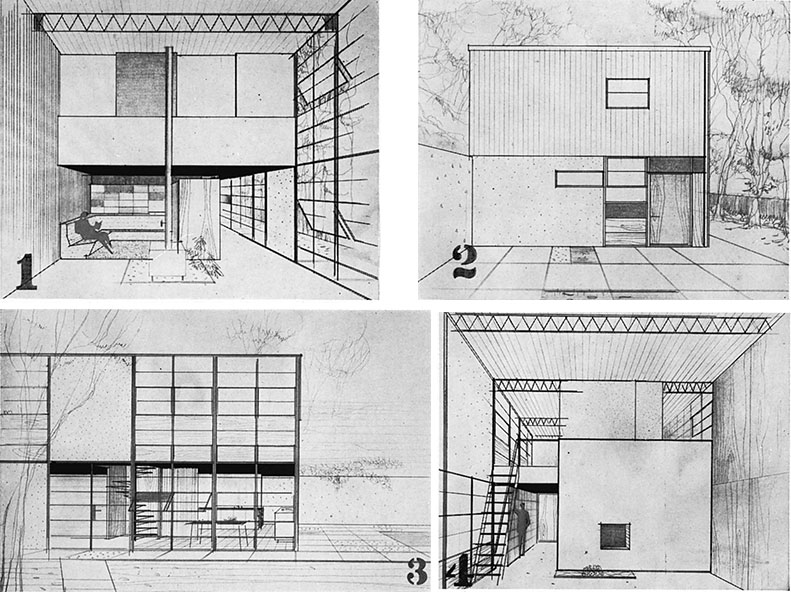
Case Study House #8 Color
The distinctive façade of the two pavilions used color along with varying materials and textures to create visual division. “Actually the beauty of the project rests in the juxtaposition of carefully arranged planes—solid, opaque, and translucent—and their relations not only in the breaking up of space but in the reflection of greater space and in the containing and the enclosing and the releasing of space in creating an environment for a modern man,” says the December 1949 Arts & Architecture article that reveals the finished project.
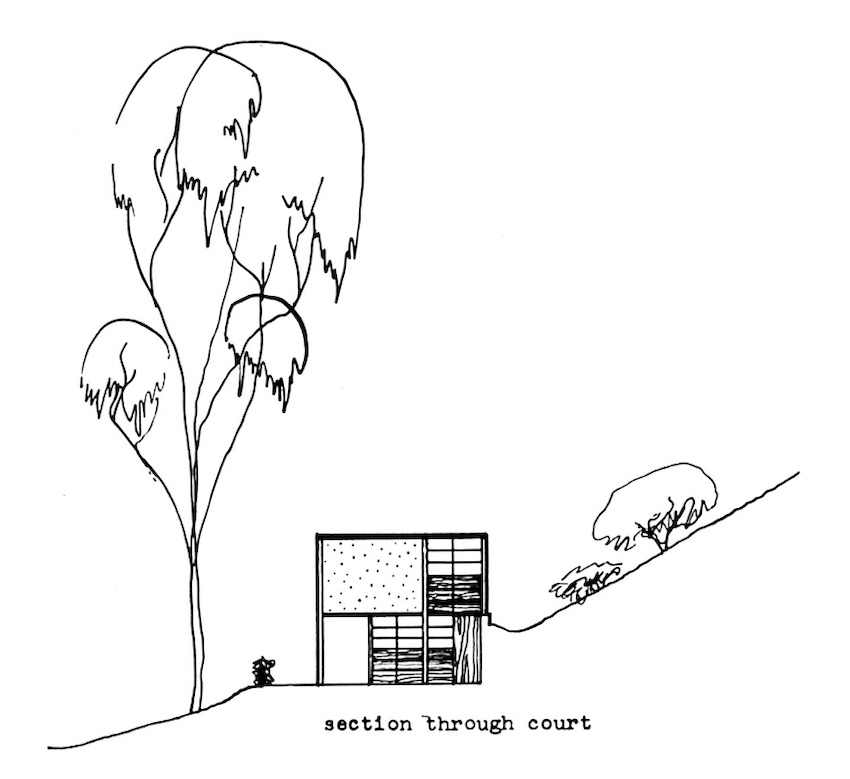
A Warm Welcome
An inviting interior was created with a truly open and fluid living space. Ray and Charles Eames made a welcoming home filled with warm colors and textures along with personal collections and gifts. The unique layout included a bedroom overlooking the main sitting area, with sliding panels to open or shut as desired. Ray and Charles resided in the home for the rest of their lives.
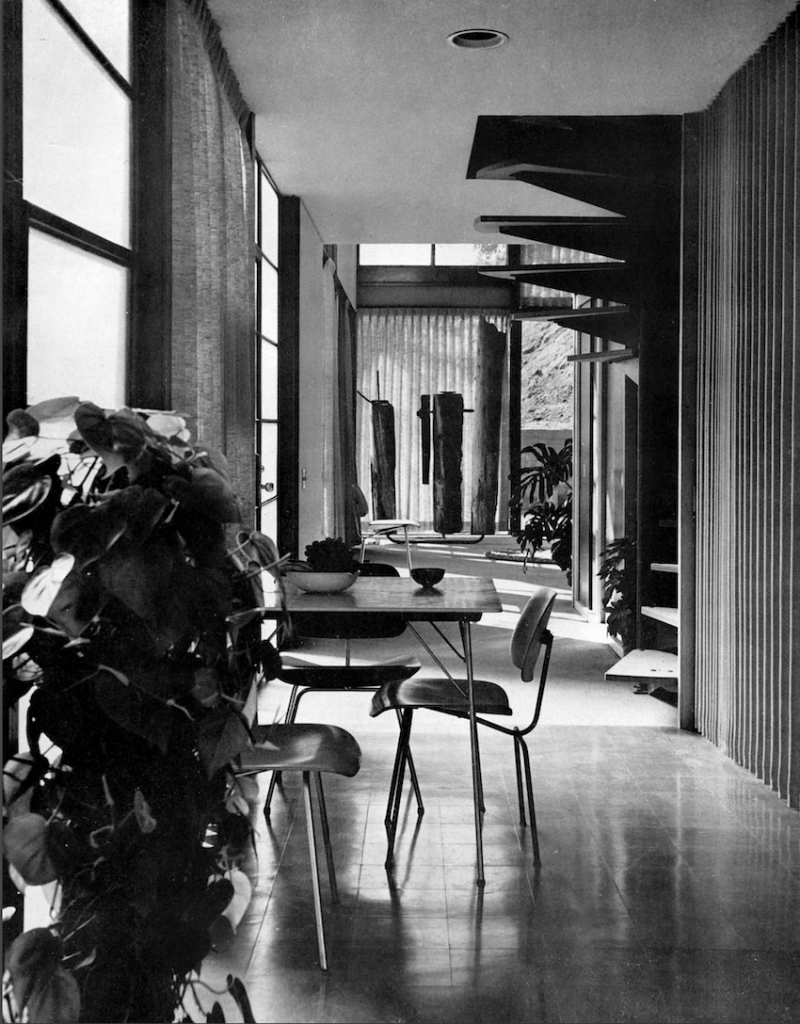
The Eames House Today
Still intact today, you can actually tour Case Study House #8! The Charles and Ray Eames House Preservation Foundation, Inc. (the Eames Foundation) was created by Lucia Eames (Ray’s step-daughter) in 2004 to preserve the home and educate the public. In 2006, the home was designated a National Historic Landmark. When open, tours can include exterior, interior or picnicking.

To see Part 1 of the story, click here. For more information on the Eames House today, visit eamesfoundation.org.
Interested in reading more about the Case Study House series? Check out this post on CSH # 5: The Unbuilt Ideal or CSH #4: a unique study in indoor-outdoor design.
Of course, don’t forget to follow us on Instagram, Facebook and Pinterest for more Mid Century Modern inspiration!

